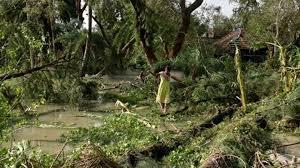
The Sunderbans, the largest mangrove forest in the world and home to the Royal Bengal Tiger, has once again come to Kolkata’s rescue, saving the 300-year-old city from the wrath of the severe cyclone, Bulbul, that killed at least eight people and left a trail of destruction in its wake.
In May 2009, the mangrove forest saved the city from the impact of cyclone Aila.
“The Sunderbans with its thick mangrove forest acts like a shield. The mangroves do not just help to reduce the wind speed drastically when the storm moves through the delta but even help to break the waves and the storm surge triggered ,” said Sugata Hazra, professor at School of Oceanographic Studies in Jadavpur University.
The Sunderbans spans 10,000 sq km across India and Bangladesh, of which 40% is in India, and is home to many rare and globally threatened wildlife species such as the Royal Bengal Tiger and the estuarine crocodile. In India, it is confined to the southern tip of West Bengal and spreads over two districts, South 24 Parganas and North 24 Parganas.
The Sunderbans itself has been ravaged by humans, though. Out of the 102 islands, 54 have human settlements; the rest have forests with national parks, reserve forests and sanctuaries which are home to the only mangrove tigers in the world. It is in these human habitats that the mangroves have suffered the maximum loss over the years.
Read more of this eye opening report so well captured by Jaydeep Thakur and published in Hindustan Times... (Link given below)










